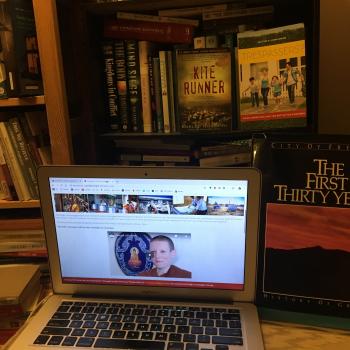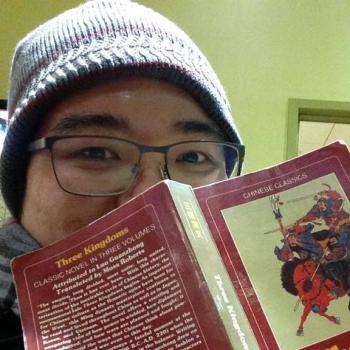![St Ignatius of Loyola, Icon made in Silesian School of Iconography - by 柯達理, 23 May 2009 (Loyola.jpg) (CC BY-SA 3.0 [https://creativecommons.org/licenses/by-sa/3.0/deed.en]), via Wikimedia Commons](https://wp-media.patheos.com/blogs/sites/721/2017/07/Loyola.jpg)
It’s not that I don’t have the imagination for the spirituality of St Ignatius of Loyola; it might be that I have too much of it. My spiritual father had to reel me back from my own madness in our first few sessions. I learned from those encounters that ideological connections between phenomena that I mentally invent are not sources of consolation, an encounter with the presence of G-d where the beauty is palpable; that everything is going on in my own head is itself probably a desolation, a life lived among phantoms where the beautiful divine is absent. The truly spiritual permeates the material order, and it is life that is lived through the body in the midst of a world that is real where grace is encountered. Imagining the crazy, on the other hand, is just that: crazy.
Grace, of course, presumes the reality of a supernatural order, one that enframes the world. The Anglican theologian John Milbank describes Henri de Lubac SJ’s exegesis of le surnaturel, the order of grace that is divinely superimposed over nature, as the ‘suspended middle.’ The world in this vision is suspended between what Aquinas calls ‘nature’ and ‘grace,’ a natural order that is infused with elements from above. This supernatural is not make-believe; it is the real world, a very material one, where the spiritual is also not made up. It may be from beyond, but you are supposed to be able to touch it too – and perhaps even eat it.
But le surnaturel is not a neat framing; encountering it requires, I think, a certain openness to the world as it is, not as a modern individual imagines it. One of the repeated themes in the work of my favourite social theorist, Michel de Certeau SJ, is that everyday life, the kind that is truly unplanned and barely ideologically coherent, reveals the spiritual cracks of modernity. Certeau says that as much as a technocratic bureaucracy may prescribe how the modern world is properly ordered without any reference to the forces that cannot be seen, most people living their everyday lives are not trying to fit into that order; they are poaching from it in order to make their own worlds that operate according to the logics of their own myths, legends, magic, and superstitions. In so doing, the spirits, gods, heroes, and demons of supposedly premodern yore never really went away, but it is by going beyond formal institutions and into the real worlds in which actual persons dwell that they can be accessed. This, I told Sam Rocha when I had finally begun to digest it, is what folk phenomenology is about: how ordinary people experience the world at a deep, primal level where persons look each other in the face, bound together in a spiritual order where forces that are said to be mythological are actually real.
The term for what I’m trying to talk about, Eugenia has been telling me since last year’s Feast of St Ignatius, is the everyday supernatural, the unexpected encounters with grace that are rightfully ordinary because it is simply true that the world is infused with a spiritual order that comes from above. The real interest of Eugenia’s guest contributions is not to add some kind of ecclesial diversity to my blog; it is that in writing through her experiences at World Youth Day, she is beginning to articulate her sensibilities in encountering this spiritual world in the material order. Her posts describe the messiness of her time in Kraków: the Latin Church might have planned out the formal programming, but that is not where the everyday supernatural is to be found. The everyday supernatural is about what happens when persons face each other, when the world is truly encountered, when the mess of the quotidian is the source of grace.
Therein, I have learned, is where my own weaknesses as a person are revealed. A trusted colleague revealed to me recently that one of the biggest problems with my writing and thinking is that I am so good at imagining the world as a tidy place. Messiness does not come naturally to me, but it is the truth that I need to be writing about.
To write this way, I am coming to see, is the Ignatian act. Merely saying that St Ignatius of Loyola taught that the imagination can be trained for the spiritual life is to caricature the man and his spirituality, to box the saint into his place in the Catholic spiritual economia. The world is not to be imagined into being; it is to be encountered and described as a material reality where everyday cracks mess up its apparent order. It is there that grace might be discerned, and if I practice enough, maybe both Eugenia and my spiritual father will tell me occasionally that I am finally making some personal progress.















